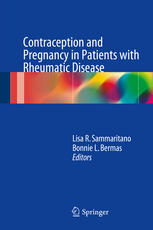

Most ebook files are in PDF format, so you can easily read them using various software such as Foxit Reader or directly on the Google Chrome browser.
Some ebook files are released by publishers in other formats such as .awz, .mobi, .epub, .fb2, etc. You may need to install specific software to read these formats on mobile/PC, such as Calibre.
Please read the tutorial at this link: https://ebookbell.com/faq
We offer FREE conversion to the popular formats you request; however, this may take some time. Therefore, right after payment, please email us, and we will try to provide the service as quickly as possible.
For some exceptional file formats or broken links (if any), please refrain from opening any disputes. Instead, email us first, and we will try to assist within a maximum of 6 hours.
EbookBell Team

4.1
100 reviewsRheumatic (or systemic autoimmune) diseases disproportionately affect young women: the female-to-male ratio for patients with systemic lupus erythematosus during the reproductive years is approximately 9:1. In the mid- to late-twentieth century, women with rheumatic disease diagnoses were often advised to avoid pregnancy due to fear of disease exacerbation and adverse outcome. In more recent years, many women with rheumatic disease have deferred childbearing until a later age due to active disease or unsafe therapies. However, with advances in rheumatology therapies, obstetric monitoring, and reproductive medicine technologies, increasing numbers of women with rheumatic diseases are pursuing pregnancy. As a result, obstetricians and rheumatologists need to be aware of the current state of knowledge and the recommendations for management of pregnancy in these patients. Contraception and Pregnancy in Patients with Rheumatic Disease explains the basics of contraception, fertility treatment, and pregnancy in rheumatic disease patients and serves as a guide and reference tool for both rheumatologists and OB/GYNs. Most general rheumatologists and OB/GYNs have limited experience in caring for rheumatic disease patients during pregnancy, and many do not have ready access to expert colleagues in this area. This book summarizes the current state of knowledge and presents a general approach for assessment of the rheumatic disease patient considering pregnancy, hormonal contraception or infertility treatment.